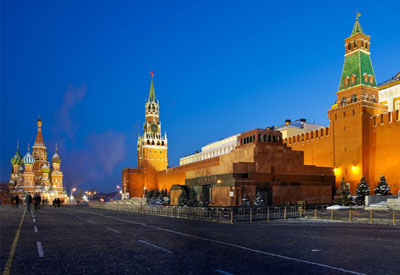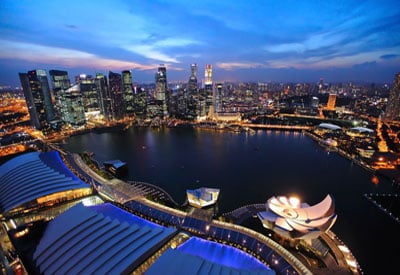Russia is located in northeastern Europe and northern Asia and shares boundaries with the Arctic Ocean on the North, northern Pacific Ocean on the West, China, Mongolia, Kazakhstan, the Caspian Sea, Azerbaijan, Georgia on the South, and the Black Sea, Ukraine, Belarus, Latvia, Estonia, Finland on the West.
:: Background of Russia ::
Founded in the 12th century, the Principality of Muscovy, was able to emerge from over 200 years of Mongol domination (13th-15th centuries) and to gradually conquer and absorb surrounding principalities. In the early 17th century, a new Romanov Dynasty continued this policy of expansion across Siberia to the Pacific. Under PETER I (ruled 1682-1725), hegemony was extended to the Baltic Sea and the country was renamed the Russian Empire. During the 19th century, more territorial acquisitions were made in Europe and Asia. Defeat in the Russo-Japanese War of 1904-05 contributed to the Revolution of 1905, which resulted in the formation of a parliament and other reforms. Repeated devastating defeats of the Russian army in World War I led to widespread rioting in the major cities of the Russian Empire and to the overthrow in 1917 of the imperial household.
The Communists under Vladimir LENIN seized power soon after and formed the USSR. The brutal rule of Iosif STALIN (1928-53) strengthened Communist rule and Russian dominance of the Soviet Union at a cost of tens of millions of lives. The Soviet economy and society stagnated in the following decades until General Secretary Mikhail GORBACHEV (1985-91) introduced glasnost (openness) and perestroika (restructuring) in an attempt to modernize Communism, but his initiatives inadvertently released forces that by December 1991 splintered the USSR into Russia and 14 other independent republics. Since then, Russia has struggled in its efforts to build a democratic political system and market economy to replace the social, political, and economic controls of the Communist period. In tandem with its prudent management of Russia’s windfall energy wealth, which has helped the country rebound from the economic collapse of the 1990s, the Kremlin in recent years has overseen a recentralization of power that has undermined democratic institutions. Russia has severely disabled the Chechen rebel movement, although violence still occurs throughout the North Caucasus.
In this Country Profile
:: Geography of Russia ::
Location: Northern Asia (the area west of the Urals is considered part of Europe), bordering the Arctic Ocean, between Europe and the North Pacific Ocean.
Geographic coordinates: 60 00 N, 100 00 E
Area:
total: 17,075,200 sq km
land: 16,995,800 sq km
water: 79,400 sq km
Area – comparative: approximately 1.8 times the size of the US
Land boundaries:
total: 20,241.5 km
border countries: Azerbaijan 284 km, Belarus 959 km, China (southeast) 3,605 km, China (south) 40 km, Estonia 290 km, Finland 1,313 km, Georgia 723 km, Kazakhstan 6,846 km, North Korea 17.5 km, Latvia 292 km, Lithuania (Kaliningrad Oblast) 227 km, Mongolia 3,441 km, Norway 196 km, Poland (Kaliningrad Oblast) 432 km, Ukraine 1,576 km.
Maritime claims:
territorial sea: 12 nm
contiguous zone: 24 nm
exclusive economic zone: 200 nm
continental shelf: 200-m depth or to the depth of exploitation
Climate:
territorial sea: 12 nm
contiguous zone: 24 nm
exclusive economic zone: 200 nm
continental shelf: 200-m depth or to the depth of exploitation
Terrain: broad plain with low hills west of Urals; vast coniferous forest and tundra in Siberia; uplands and mountains along southern border regions.
Elevation extremes:
lowest point: Caspian Sea -28 m
highest point: Gora El’brus 5,633 m
Natural resources: wide natural resource base including major deposits of oil, natural gas, coal, and many strategic minerals, timber. Note: formidable obstacles of climate, terrain, and distance hinder exploitation of natural resources.
Land use:
arable land: 7.17%
permanent crops: 0.11%
other: 92.72% (2005)
Natural hazards: development; volcanic activity in the Kuril Islands; volcanoes and earthquakes on the Kamchatka Peninsula; spring floods and summer/autumn forest fires throughout Siberia and parts of European Russia.
Environment – current issues: air pollution from heavy industry, emissions of coal-fired electric plants, and transportation in major cities; industrial, municipal, and agricultural pollution of inland waterways and seacoasts; deforestation; soil erosion; soil contamination from improper application of agricultural chemicals; scattered areas of sometimes intense radioactive contamination; groundwater contamination from toxic waste; urban solid waste management; abandoned stocks of obsolete pesticides.
Environment – international agreements: party to: Air Pollution, Air Pollution-Nitrogen Oxides, Air Pollution-Sulfur 85, Antarctic-Environmental Protocol, Antarctic-Marine Living Resources, Antarctic Seals, Antarctic Treaty, Biodiversity, Climate Change, Climate Change-Kyoto Protocol, Endangered Species, Environmental Modification, Hazardous Wastes, Law of the Sea, Marine Dumping, Ozone Layer Protection, Ship Pollution, Tropical Timber 83, Wetlands, Whaling. Signed, but not ratified: Air Pollution-Sulfur 94.
:: People of Russia ::
Population: 140,702,096 (July 2008 est.)
Age structure:
0-14 years: 14.6% (male 10,577,858/female 10,033,254)
15-64 years: 71.2% (male 48,187,807/female 52,045,102)
65 years and over: 14.1% (male 6,162,400/female 13,695,673) (2008 est.)
Median age:
total: 38.3 years
male: 35.1 years
female: 41.4 years (2008 est.)
Population growth rate: -0.474% (2008 est.)
Birth rate: 11.03 births/1,000 population (2008 est.)
Death rate: 16.06 deaths/1,000 population (2008 est.)
Net migration rate: 0.28 migrant(s)/1,000 population (2008 est.)
Sex ratio:
at birth: 1.06 male(s)/female
under 15 years: 1.05 male(s)/female
15-64 years: 0.93 male(s)/female
65 years and over: 0.45 male(s)/female
total population: 0.86 male(s)/female (2008 est.)
Infant mortality rate:
total: 10.81 deaths/1,000 live births
male: 12.34 deaths/1,000 live births
female: 9.18 deaths/1,000 live births (2008 est.)
Life expectancy at birth:
total population: 65.94 years
male: 59.19 years
female: 73.1 years (2008 est.)
Total fertility rate: 1.4 children born/woman (2008 est.)
HIV/AIDS – adult prévalence rate: 1.1% (2001 est.)
HIV/AIDS – people living with HIV/AIDS: 860,000 (2001 est.)
HIV/AIDS – deaths: 9,000 (2001 est.)
Nationality: noun: Russian(s) adjective: Russian
Ethnic groups: Russian 79.8%, Tatar 3.8%, Ukrainian 2%, Bashkir 1.2%, Chuvash 1.1%, other or unspecified 12.1% (2002 census)
Religions: Russian Orthodox 15-20%, Muslim 10-15%, other Christian 2% (2006 est.) Note: estimates are of practicing worshipers; Russia has large populations of non-practicing believers and non-believers, a legacy of over seven decades of Soviet rule.
Languages: Russian, many minority languages
Literacy:
definition: age 15 and over can read and write
total population: 99.4%
male: 99.7%
female: 99.2% (2002 census)


Sorry, the comment form is closed at this time.